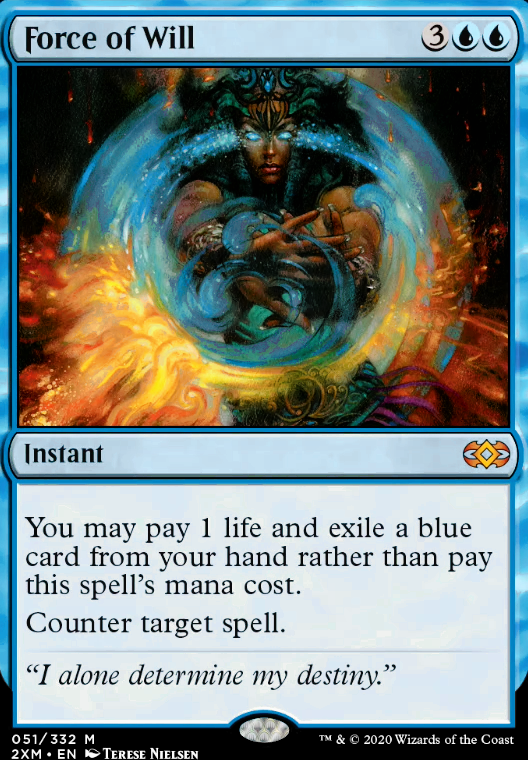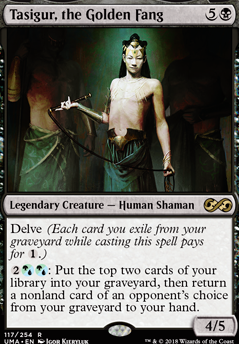Hi guys!
Boy have we gotten a ton of tools since Crimson Vow! I haven't felt this great about playing Tasigur since Flash Hulk-- it's been amazing. WOTC has been printing so many absolute power houses at 7 cmc, which gives Tasigur so many options lately. I'm honestly still juggling between testing Toxrill, Hullbreaker Horror, and Koma-- and they release Jin Gitaxias in NEON!
I think Crimson Vow has changed Tasigur forever and I am currently trying to still smooth out the edges from the big changes in Crimson Vow. Nevertheless, NEON has been released and I just wanted to give you guys an update on what I am planning on trying out myself.
Please keep into consideration that while I am playtesting Tasigur a lot lately, I am still in the process of fine tuning him from Crimson Vow and now also will be adding some of the new NEON cards.
Jin-Gitaxias Brief Overview
First and foremost, I actually just wanted to talk about Jin Gitaxias-- the most recent 7 drop with potential in Tasigur. I think its fine and worth trying out, I just dont like the idea that my pay off spell requires more additional pieces to work out. Being able to start with an artifact I think is pretty easy before going for a win attempt. And a lot of time if people read interaction, they start with a bait (Veil of summer, silence, grand abolisher, ranger captain) instead of the actual pay off / combo. And if people do jam first, sometimes its more or less testing if someone has interaction or not-- not whether they have 1 or 2 pieces of interaction.
Jin does let you combo with like consult / tainted pact / demonic tutor easily though. So I think its interesting that he has like defensive and offensive capabilities, but I personally think his defensive capabilities are just okay and his offensive capabilities want very specific cards in your hand. I'd want more for my 7-drop pay off because a lot of the time I'm using my tutors FOR neoform / birthing pod. I've noticed that with both Koma and Toxrill I was initially not confident enough to main deck the card, only to later get convinced and put it in the main deck. Maybe I am too harsh on 7 drops on release, so take my opinion with a grain of salt.
Brief Review of Past Changes
Hullbreaker Horror has changed the deck forever and it honestly really gives Tasigur such a strong purpose nowadays. Hullbreaker Horror has made our neoform cards become a real kill condition. Obviously that helps with a neoform bas game plan-- but I have noticed that it also helps ad nauseam hands because you only need to naus into fast mana and a neoform essentially.
Urza's Saga has been very useful lately. I have been able to utilize it with Seedborn Muse in order to create multiple Karnstructs and beat down my opponents. But more importantly, it's really been able to find the necessary artifact I need to go off with Hullbreaker Horror like I have wanted. Overall, I've been pretty happy with its addition.
Astral Cornucopia has been decent, but honestly needs more testing from my side. It does everything I want it to do in the situation of Hullbreaker Horror-- but sometimes the question is if it's too narrow for other applications. I have had it in hand when it has been necessary (or at least enable metalcraft easily) and I have heard some very positive reviews from other Tasigur players-- but it definitely still needs more testing. I think it's a bit too soon to come to a conclusion on it, so I'm keeping it in longer to give it more of a shot.
Kinnan has been like an insane mana producer. I think I have been lucky with my draws, because I usually draw him in scenarios where he starts making a ton of mana for me. I can see hands where you just want to mulligan him away because he makes no mana by himself-- but he's been able to enable some really explosive plays and enable Hullbreaker Horror for me. He probably needs more testing, but I have been pretty happy with him lately.
Ad Nauseam, believe it or not, has felt better than ever recently because of Hullbreaker Horror. Like I mentioned before, being able to naus into fast mana and neoform has given us more easy ways of winning with an ad nauseam.
Changes
OUT:
IN:
Reasoning for Changes
Prismatic Vista & Swamp -> Otawara & Boseiju
Honestly I don't think I need to write much here at all. There is just so much utility in Boseiju and Otawara and unfortunately Prismatic Vista and Swamp were just our worst lands. These channel lands have the ability to be an UNTAPPED land drop when needed or uncounterable removal in the late game.
I'm just a little sad because I found prismatic vista pretty useful to help getting Tasigur out asap-- which has been more and more important lately when we have such a wide range of 7-drops. But in terms of our mana base, cutting prismatic vista and a basic swamp is the right call. It does make me question just how many utility lands I can run in a 3C mana base though. With Urza's Saga, Phyrexian Tower, and now a bunch of one color producing lands-- I will probably need to do some hypergeometric stuff to figure out if my mana base does what I want it to do.
Praetor's Grasp, Mnemonic Betrayal, & Dauthi Voidwalker -> Oko, Assassin's Trophy, & Gilded Drake
First and foremost, I'm simply making these changes because I'm anticipating less turbo naus nowadays and more midrange and stax. Cards like Praetor's Grasp, Mnemonic Betrayal, and Dauthi were very strong into turbo-- but I personally think they feel a little more weak into midrange and stax. This is a disclaimer: none of these cards are actually bad and I plan on putting them back in if I see more turbo naus again, but I'm making these changes to tech against what I anticipate to be the meta lately.
Oko and Assassin's Trophy is brought in against both stax and midrange. People who have been following my updates know that I talk about Oko constantly and I have tried him a good amount in the past, and I think it's finally time for him again. A planeswalker that is able to blank your opponent's commanders per turn or shut down an opponent's artifact / creature stax piece is absurd-- especially given the fact that it's repeatable and we have a 4/5 blocker easily accessible to us. A word of advice is that if you turn your opponent's commander into an elk, sometimes you should actually let them deal damage instead of blocking it because you want them without their commander as long as possible.
Gilded Drake is one that I am less certain about, but I figured it would be a good time to try once again. With the emergence of stax also comes the emergence of midrange to combat stax. And so stealing their most valuable commanders that midrange grinds with is very beneficial. Another big thing is that I have noticed people actually want to steal our huge grindy 7-drop creature and so Gilded Drake can be a great way to get it back.
Dauthi is one card I am honestly unsure about cutting, but he has felt not up to par into stax or midrange personally. He's still great against things like reanimator and breach stuff-- but he has been feeling awkward lately and not coming down at the right time for me. I will most likely revisit him again by next update.
Koma -> Toxrill
Toxrill has been an absolute house against stax and midrange for me. Almost no commander centric deck can get off the ground with Toxrill controlling the board and you create a very fast clock because you start punching people with all your slugs. It's honestly to the point where opponents have begun trying to think of anti-Toxrill tech because it just shuts down so much of their deck. I have actually even utilized sacrifice and culling ritual to funnel mana into Toxrill and been able to win games like that.
I think Koma feels great against stax & turbo because you play Koma and have a huge threat under all the stax, Toxrill feels great against midrange & stax because you wipe all the stax creatures and destroy all creature value engines, and Nezahal has felt decent against midrange & turbo because you draw a ton of cards from your opponents.
I feel somewhat strongly that it's best to simply choose 2 of the 3 flex 7-drops and tech against your meta (to clarify, I think Koma / Nezahal / Toxrill are the flex 7-drops while Hullbreaker Horror is always in the list). I think rarely will you want all 3 flex options and I think Ad Nauseam is still too strong of a card for us to ignore. Even if we aren't nearly as strong of an ad nauseam deck compared to R/B/X/X variants-- end step naus still single handedly wins games. But in any case, I have decided to cut Koma because I have felt that the combination of stax and turbo hasn't been super common to me lately. I think Toxrill and Nezahal will cover bases nicely as you can play Toxrill into midrange / stax wheraes you can play Nezahal into midrange / turbo. If I run into stax / turbo, I feel confident that I can play either Toxrill or Nezahal (given which I think will be more helpful on the board) and still have a good shot of winning. If it becomes a lot more common, I will consider swapping one out for Koma again, but currently I am not feeling that. This again is a meta choice and so I wanted people to be aware of my reasoning for my own personal changes-- I would encourage you guys to make your choices of 7-drops from your own perceived idea of the meta in your play group.
Final Notes
Please remember that a lot of these changes are simply meta changes rather than like objective 1 for 1 changes. It's one reason why I feel strongly about including my reasoning with each of my changes and I really hope you guys start to tech against your perceived metas.
This time I did a review of the new 7-drops and a review of my past changes. I hope to do that kind of thing going forward, but unfortunately I can't always promise it. I'm certainly going to try my best though.
As always, I talk about each of my planned changes MUCH earlier than these things get released. If you'd like to bounce ideas off of me, please come say hi in the Tasigur discord: Tasigur Discord
I also have a new twitter designated specifically for MTG and so if you'd like to keep up with that, here's my link: MTG Twitter











